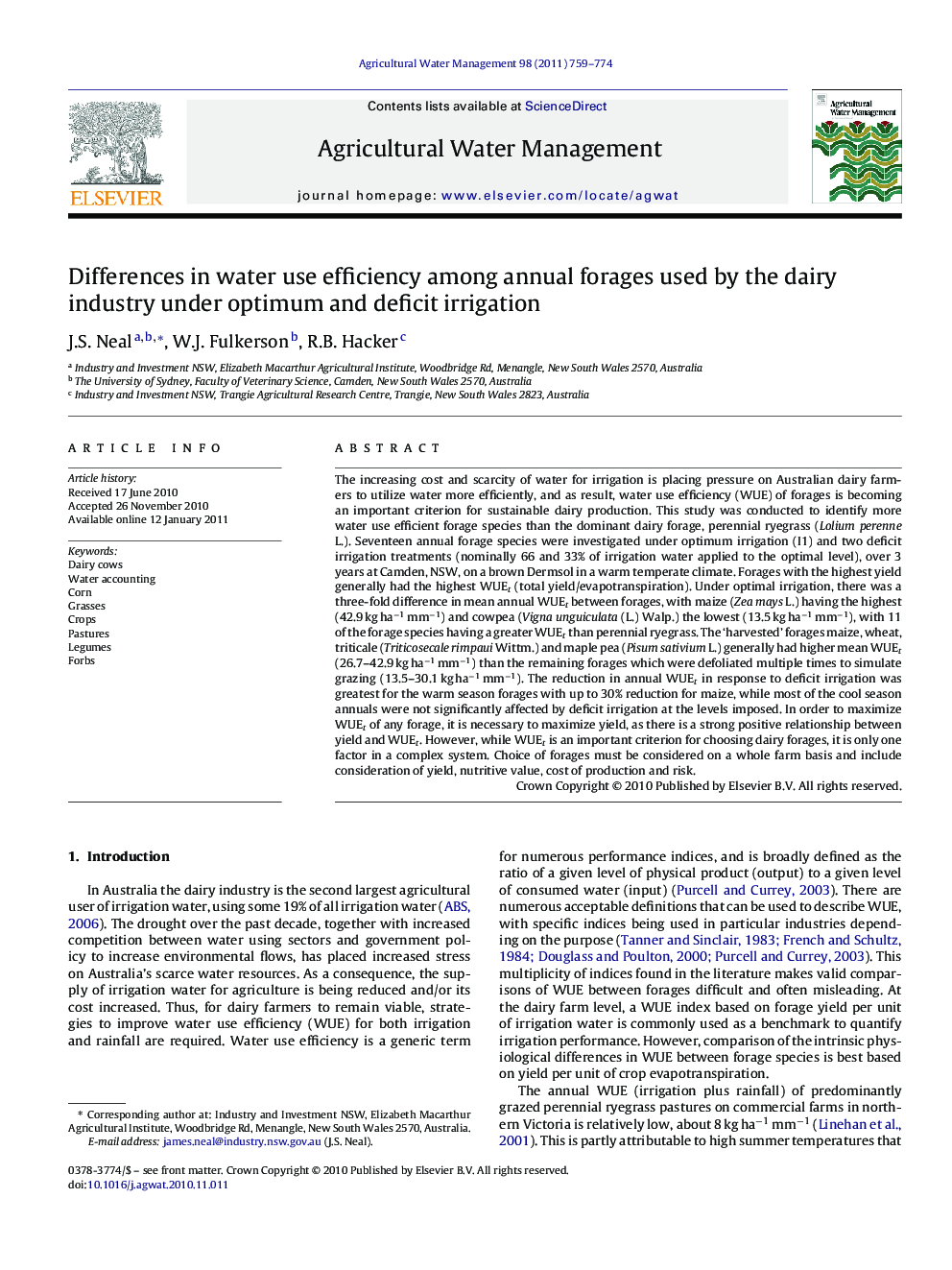| کد مقاله | کد نشریه | سال انتشار | مقاله انگلیسی | نسخه تمام متن |
|---|---|---|---|---|
| 4479389 | 1316440 | 2011 | 16 صفحه PDF | دانلود رایگان |

The increasing cost and scarcity of water for irrigation is placing pressure on Australian dairy farmers to utilize water more efficiently, and as result, water use efficiency (WUE) of forages is becoming an important criterion for sustainable dairy production. This study was conducted to identify more water use efficient forage species than the dominant dairy forage, perennial ryegrass (Lolium perenne L.). Seventeen annual forage species were investigated under optimum irrigation (I1) and two deficit irrigation treatments (nominally 66 and 33% of irrigation water applied to the optimal level), over 3 years at Camden, NSW, on a brown Dermsol in a warm temperate climate. Forages with the highest yield generally had the highest WUEt (total yield/evapotranspiration). Under optimal irrigation, there was a three-fold difference in mean annual WUEt between forages, with maize (Zea mays L.) having the highest (42.9 kg ha−1 mm−1) and cowpea (Vigna unguiculata (L.) Walp.) the lowest (13.5 kg ha−1 mm−1), with 11 of the forage species having a greater WUEt than perennial ryegrass. The ‘harvested’ forages maize, wheat, triticale (Triticosecale rimpaui Wittm.) and maple pea (Pisum sativium L.) generally had higher mean WUEt (26.7–42.9 kg ha−1 mm−1) than the remaining forages which were defoliated multiple times to simulate grazing (13.5–30.1 kg ha−1 mm−1). The reduction in annual WUEt in response to deficit irrigation was greatest for the warm season forages with up to 30% reduction for maize, while most of the cool season annuals were not significantly affected by deficit irrigation at the levels imposed. In order to maximize WUEt of any forage, it is necessary to maximize yield, as there is a strong positive relationship between yield and WUEt. However, while WUEt is an important criterion for choosing dairy forages, it is only one factor in a complex system. Choice of forages must be considered on a whole farm basis and include consideration of yield, nutritive value, cost of production and risk.
Research highlights▶ Under optimal irrigation, there was a three-fold difference in mean annual WUEt between forages maize and cowpea. ▶ The ‘harvested’ forages maize, wheat, triticale and maple pea generally had higher WUE than those forages which are used for grazing. ▶ Deficit irrigation had the greatest effect on the warm season forages. ▶ In order to maximize WUEt of any forage, it is necessary to maximize yield, as there is a strong positive relationship between yield and WUE.
Journal: Agricultural Water Management - Volume 98, Issue 5, March 2011, Pages 759–774